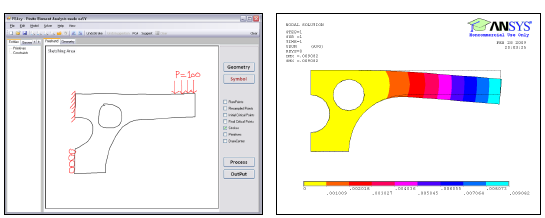For students to succeed in engineering design (and engineering practice) they must be able to make design decisions that are grounded in data and analysis. The potential danger, however, in introducing analysis and calculations too early in the design process is that this may lead the designer to become “fixated” on the current design idea and not explore other, potentially better ideas1, 2. This can be problematic as engineering education endeavors to teach students to be more innovative. Thus, while it is important to teach students how to support their design
decisions with analysis, it is likewise important to help them engage in analysis without leading to limited exploration of alternative ideas. The overarching goal of this project is to provide students with a more coherent and connected experience with learning engineering design and engineering analysis by facilitating the learning of both design and analysis through a natural, intuitive and portable pen-and-tablet-based system, called “IDEA-Pen”. The aims of this project are as follows:
1. Enable intuitive creation and manipulation of sketches representing engineering mechanics and kinematics problems, and explore, through critical exploration, structural and kinematic “what-if” scenarios by using finite-element solvers and constraint solvers to run quick simulations.
2. Enable a visual dialogue between the student and teacher, and a collaborative learning environment among students, through easy, intuitive, and real-time exchange of higher level ideas embedded through Sketch-Based Interfaces and Modeling (SBIM).
3. Create a software platform for sketch-based engineering analysis that allows real time exploration of ideas that require deeper computational support, training and contexts not
accessible in the past by instructor in a classroom or lab.
We will thus make a critical bridge between the traditional, equation-based “mathematical” learning of engineering, and the “visual”, exploratory engineering learning that is more design oriented.

IDEA-Pen: Interactive Design and Analysis through a Pen-based Interface
Authors: Anirudh Roshan Sriram, Monica E Cardella, Karthik Ramani
121st ASEE Annual Conference & Exposition, Indianapolis, IN, June 15-18, 2014


Convergence Design Lab Admin
Administrator of the Convergence Design Lab website.
